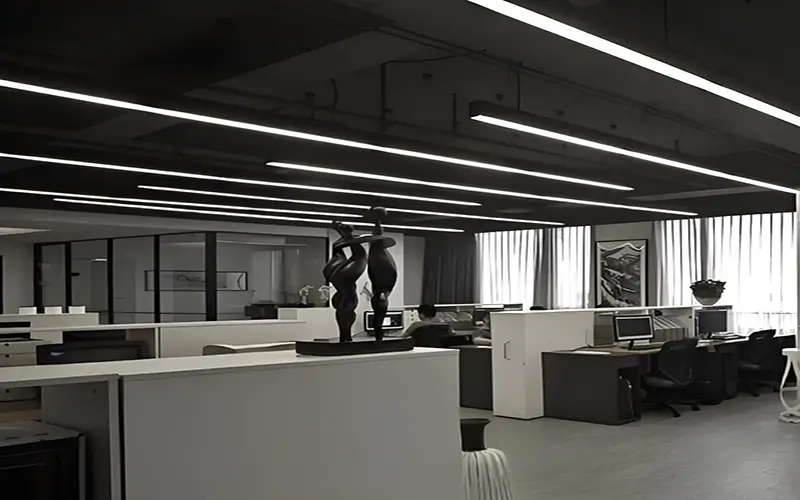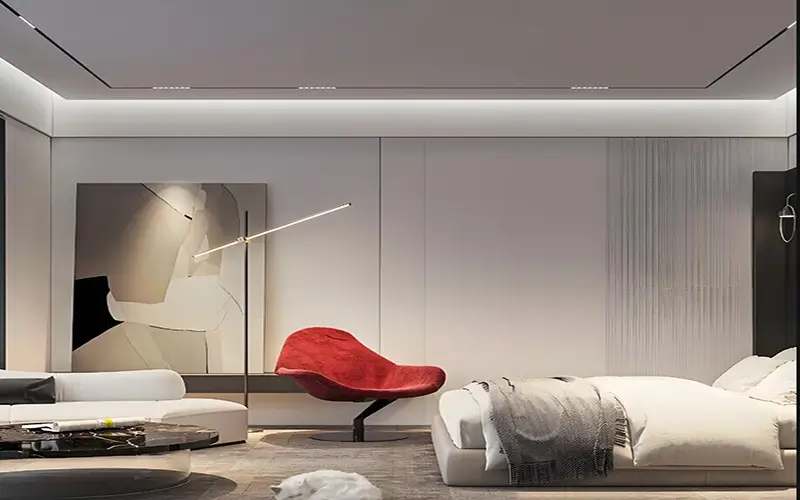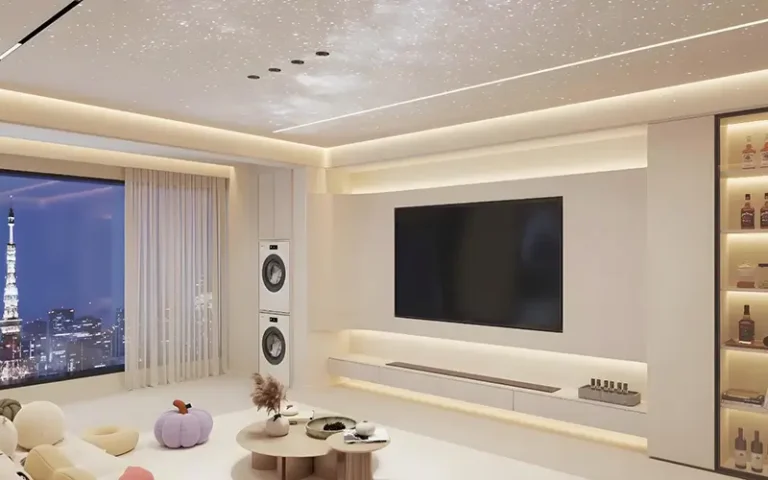What Does 6000k Light Mean?
The color and color temperature of lighting play a vital role in illuminating and creating an atmosphere in different spaces. Among the various lighting options, it is very important to understand the concept of different color temperatures, because color temperature affects mood and atmosphere. Today, we will discuss the next commonly used color temperature: 6000K, and take a closer look at the meaning of 6000K light, its characteristics, and the most effective uses.
What is 6000K?
Conventionally, 6000K refers to a specific color temperature on the Kelvin color scale, which is used to measure the color of light emitted by a light source.
The Kelvin color scale ranges from warm (low numbers) to cool (high numbers). So 6000K would be considered cold light. And the characteristics of cold light 6000K are bright and white with a slightly blue hue. We often use this 6000K to simulate sunlight, which is known for its refreshing and vivid qualities.

What Does 6000K in Color Temperature Represent?
The color temperature of 6000K represents a light source that can imitate natural daylight in the morning or afternoon. It emits a bright white light with a slight blue tint, which is perfect for environments where clarity and focus are important.
In addition, 6000K is completely different from warm color temperatures (such as 2700K to 3000K) which create a comfortable and relaxing atmosphere. 6000K light enhances alertness and visibility and is mainly suitable for various applications of any lighting.
What is 6000K Used For?
The primary function of 6000K lighting is to deliver sharp and bright illumination. The clear, white light it emits accentuates details and improves contrast, making it perfect for activities that demand accuracy.
Moreover, 6000K light is appreciated for its capacity to lessen eye strain and tiredness. Making it a favored option for work environments and spaces where maintaining concentration and alertness is essential.
Where is 6000K Mainly Used?
6000K is widely used in various lighting applications, mainly task lighting.
Residential lighting
6000K is perfect for kitchens, bathrooms, and home offices with some task lighting. This allows for accurate color rendering and enhanced visibility.
Outdoor Lighting
6000K is often for security lights, street lights, and exterior lamps. Outdoor spaces are wide and dark, so some bright and intense light place. Provide excellent visibility and enhance safety by illuminating large areas.
Architectural Lighting
6000K is used to highlight and emphasize architectural features. Cool white light can enhance the appearance of modern buildings, making them look sleek, clean, and sophisticated. So 6000K is also commonly in commercial buildings and retail spaces to create a bright and inviting atmosphere.
Commercial Lighting
Offices, retail stores, and medical institutions often choose 6000K lighting. Bright white light helps create a professional and neat environment, which can improve productivity and customer satisfaction. In retail spaces, 6000K lighting can enhance the appearance of products, making them more attractive to customers.

6000K vs. 5000K, How to Choose?
6000K vs. 5000K are very similar and have similar uses. But how to choose between them depends mainly on the desired atmosphere and function.
Although both are cool white light, 5000K has a slightly warmer tone compared to 6000K. If you like a light that is very similar to natural daylight and has a neutral white appearance, 5000K is a good choice. On the other hand, if you want a clearer, more vivid, and slightly blue light, 6000K is a good choice.
6000K may be more suitable for offices or work areas requiring a little more precision. For slightly softer, retail stores or residential environments, 5000K may be more popular.
Which is better, 6000K or 6500K?
The choice between 6000K and 6500K comes down to personal preference and specific application. Because both color temperatures are considered cool white, 6500K has a more noticeable blue tint compared to 6000K.
We use the 6500K in medical areas, laboratories, and certain industrial environments. These are places where very bright and intense light is particularly needed. It is very similar to natural daylight at noon, which is ideal for tasks that require the most accurate color rendering and clarity.
For general indoor and outdoor task lighting applications, 6000K is a more versatile choice. It strikes a balance between brightness and comfort, making it suitable for a wider range of settings without being too harsh.
How to Choose 6000K Correctly?
When choosing 6000K lighting, consider the following:
Purpose and Environment: Determine the primary purpose of the lighting and the environment. 6000K is an excellent choice for tasks that require increased visibility and task lighting.
Brightness: Consider the lumen output, or brightness level, of 6000K lighting. Higher lumens provide more light output, which is critical for areas that need ample lighting.
Personal Preference: Consider the overall aesthetic and effect. 6000K lighting creates a modern, clean look that can complement certain architectural styles and interior designs.
Summary
6000K light provides bright cool white illumination, perfect for a variety of indoor and outdoor lighting applications. Because it enhances visibility and reduces eye fatigue, it is a popular choice for workspaces, commercial environments, and areas where clarity is critical. So 6000K lighting is the color temperature to illuminate kitchens, offices, and work areas. If you need 6000K LED light strips, please contact us.
FAQs
Yes, 6000K is a cool white. This is because it is at the cooler end of the color temperature spectrum and provides a crisp, clean look.
People often use 6000K LED lights in environments that require bright, clear lighting, such as offices, workshops, and retail spaces. Additionally, they commonly use these lights in automotive headlights and outdoor security lighting.
Of course, 6000K light is suitable for home lighting. For example, in the kitchen, bathroom, or home office. Where task lighting is the main focus and concentrated light is needed for brightness.
6000K light is not harmful to the eyes, but you can’t long-term exposure to 6000K. However, long-term exposure to high-intensity blue light can cause eye fatigue and discomfort. It is important to use appropriate lighting levels and take breaks to avoid eye fatigue.








